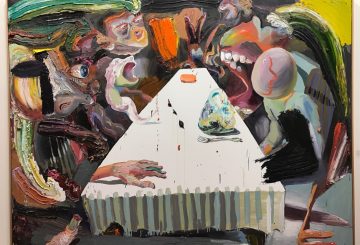Decoding contemporary artspeak for the discerning reader. Your guide: Andrew Frost.
Painting
Painting – like democracy or comedy – is a cultural practice that is widely accepted and easily recognised in its most traditional forms, yet it is difficult to define beyond the most basic description, that is, the action or skill of using paint, either in a picture or as decoration, typically applied to a surface such as paper, canvas or plaster etc. The contemporary use of the term painting thus refers to panoply of familiar styles, genres and modes, and is often spoken of in semi-mystical terms as the practice of painting is said to evoke conditions of beauty, tragedy, irony and redundancy. Since painting also commands upwards of 90 percent of the art market the definition of painting is not something that is widely considered or deemed even necessary, relying instead on the adage – you know it when you see it.
Post Painting
In recent years the practice of painting has come under scrutiny as various practitioners and art theorists who have questioned the condition of painting to explore the possibility of painting in the expanded field and the status of painting in the age of photography and the Internet, a field of inquiry loosely termed post painting. The logic of post painting argues that anything that is specific to traditional notions of painting such as colour, form, texture or subject could also conceivably be explored via media such as video, sculpture or installation and might include large piles of dirt, water vapour and aerosols, and a performance involving an artist not deliberately painting. Since the practice of post painting seeks to “problematize” the act and interpretation of traditional painting, it might also include the application of paint on to a surface such as paper, canvas or plaster etc that might then be hung in a gallery. While questioning painting, post painting also relies on an understanding that to understand a post painting – you’ll know it when you don’t see it.


